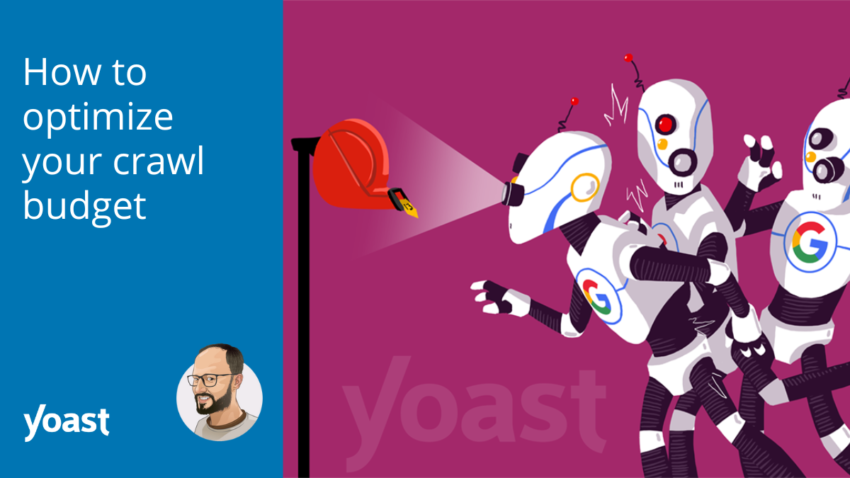Google doesn’t all the time spider each web page on a website immediately. Generally, it might probably take weeks. This may get in the way in which of your web optimization efforts. Your newly optimized touchdown web page won’t get listed. At that time, it’s time to optimize your crawl price range. On this article, we’ll focus on what a ‘crawl price range’ is and what you are able to do to optimize it.
What’s a crawl price range?
Crawl price range is the variety of pages Google will crawl on your website on any given day. This quantity varies barely every day, however general, it’s comparatively secure. Google may crawl six pages in your website every day; it’d crawl 5,000 pages; it’d even crawl 4,000,000 pages each single day. The variety of pages Google crawls, your ‘price range,’ is usually decided by the scale of your website, the ‘well being’ of your website (what number of errors Google encounters), and the variety of hyperlinks to your website. A few of these elements are issues you possibly can affect; we’ll get to that in a bit.
How does a crawler work?
A crawler like Googlebot will get an inventory of URLs to crawl on a website. It goes by that listing systematically. It grabs your robots.txt file often to guarantee it’s nonetheless allowed to crawl every URL after which crawls the URLs individually. As soon as a spider has crawled a URL and parsed the contents, it provides new URLs discovered on that web page that it has to crawl again on the to-do listing.
A number of occasions could make Google really feel a URL needs to be crawled. It might need discovered new hyperlinks pointing at content material, or somebody has tweeted it, or it might need been up to date within the XML sitemap, and so on., and so on… There’s no technique to make an inventory of all of the the explanation why Google would crawl a URL, however when it determines it has to, it provides it to the to-do listing.
Learn extra: Bot traffic: What it is and why you should care about it »
When is crawl price range a problem?
Crawl price range isn’t an issue if Google has to crawl many URLs in your website and has allotted a whole lot of crawls. However, say your website has 250,000 pages, and Google crawls 2,500 pages on this explicit website every day. It’ll crawl some (just like the homepage) greater than others. It may take as much as 200 days earlier than Google notices explicit adjustments to your pages in case you don’t act. Crawl price range is a matter now. Then again, if it crawls 50,000 a day, there’s no problem in any respect.
Observe the steps beneath to find out whether or not your website has a crawl price range problem. This does assume your website has a comparatively small variety of URLs that Google crawls however doesn’t index (as an illustration, since you added meta noindex).
- Decide what number of pages your website has; the variety of URLs in your XML sitemaps could be a superb begin.
- Go into Google Search Console.
- Go to “Settings” -> “Crawl stats” and calculate the common pages crawled per day.
- Divide the variety of pages by the “Common crawled per day” quantity.
- It’s best to most likely optimize your crawl price range if you find yourself with a quantity increased than ~10 (so you may have 10x extra pages than what Google crawls every day). You possibly can learn one thing else if you find yourself with a quantity decrease than 3.
What URLs is Google crawling?
You actually ought to know which URLs Google is crawling in your website. Your website’s server logs are the one ‘actual’ method of figuring out. For bigger websites, you need to use one thing like Logstash + Kibana. For smaller websites, the blokes at Screaming Frog have launched an SEO Log File Analyser software.
Get your server logs and have a look at them
Relying in your kind of internet hosting, you won’t all the time be capable of seize your log recordsdata. Nonetheless, in case you even assume it’s essential work on crawl price range optimization as a result of your website is large, it’s best to get them. In case your host doesn’t permit you to get them, it’s time to vary hosts.
Fixing your website’s crawl price range is quite a bit like fixing a automobile. You possibly can’t repair it by trying on the outdoors; you’ll must open that engine. Taking a look at logs goes to be scary at first. You’ll rapidly discover that there’s a lot of noise in logs. You’ll discover many generally occurring 404s that you simply assume are nonsense. However you have to repair them. You could wade by the noise and guarantee your website isn’t drowned in tons of outdated 404s.
Hold studying: Website maintenance: Check and fix 404 error pages »
Improve your crawl price range
Let’s have a look at the issues that enhance what number of pages Google can crawl in your website.
Web site upkeep: scale back errors
The 1st step in getting extra pages crawled is ensuring that the pages which might be crawled return one in every of two doable return codes: 200 (for “OK”) or 301 (for “Go right here as an alternative”). All different return codes are not OK. To determine this out, have a look at your website’s server logs. Google Analytics and most different analytics packages will solely observe pages that served a 200. So that you gained’t discover many errors in your website in there.
When you’ve acquired your server logs, discover and repair widespread errors. Essentially the most simple method is by grabbing all of the URLs that didn’t return 200 or 301 after which ordering by how typically they have been accessed. Fixing an error may imply that you must repair code. Otherwise you might need to redirect a URL elsewhere. If you already know what brought about the error, you may also attempt to repair the supply.
One other good supply for locating errors is Google Search Console. Learn our Search Console guide for more information on that. When you’ve acquired Yoast SEO Premium, you possibly can simply redirect them away utilizing the redirects manager.
Block elements of your website
You probably have sections of your website that don’t have to be in Google, block them using robots.txt. Solely do that if you already know what you’re doing, in fact. One of many widespread issues we see on bigger eCommerce websites is after they have a gazillion methods to filter merchandise. Each filter may add new URLs for Google. In instances like these, you need to be certain that you’re letting Google spider just one or two of these filters and never all of them.
Cut back redirect chains
If you 301 redirect a URL, one thing bizarre occurs. Google will see that new URL and add that URL to the to-do listing. It doesn’t all the time comply with it instantly; it provides it to its to-do listing and goes on. If you chain redirects, as an illustration, whenever you redirect non-www to www, then http to https, you may have two redirects in every single place, so all the things takes longer to crawl.
Get extra hyperlinks
That is straightforward to say however onerous to do. Getting extra hyperlinks isn’t just a matter of being superior but in addition of constructing positive others know you’re superior. It’s a matter of excellent PR and good engagement on social media. We’ve written extensively about hyperlink constructing; we’d counsel studying these three posts:
- Link building from a holistic SEO perspective
- Link building: what not to do?
- 6 steps to a successful link building strategy
When you may have an acute indexing drawback, it’s best to first have a look at your crawl errors, block elements of your website, and repair redirect chains. Hyperlink constructing is a really gradual technique to extend your crawl price range. Then again, hyperlink constructing should be a part of your course of in case you intend to construct a big website.
TL;DR: crawl price range optimization is difficult
Crawl price range optimization isn’t for the faint of coronary heart. When you’re doing all your website’s upkeep properly, or your website is comparatively small, it’s most likely not wanted. In case your website is medium-sized and well-maintained, it’s pretty straightforward to do based mostly on the above tips.
Assess your technical web optimization health
Optimizing your crawl price range is a part of your technical web optimization. Are you curious how your website’s general technical web optimization matches? We’ve created a technical SEO fitness quiz that helps you determine what it’s essential work on!
Learn on: Robots.txt: the ultimate guide »

